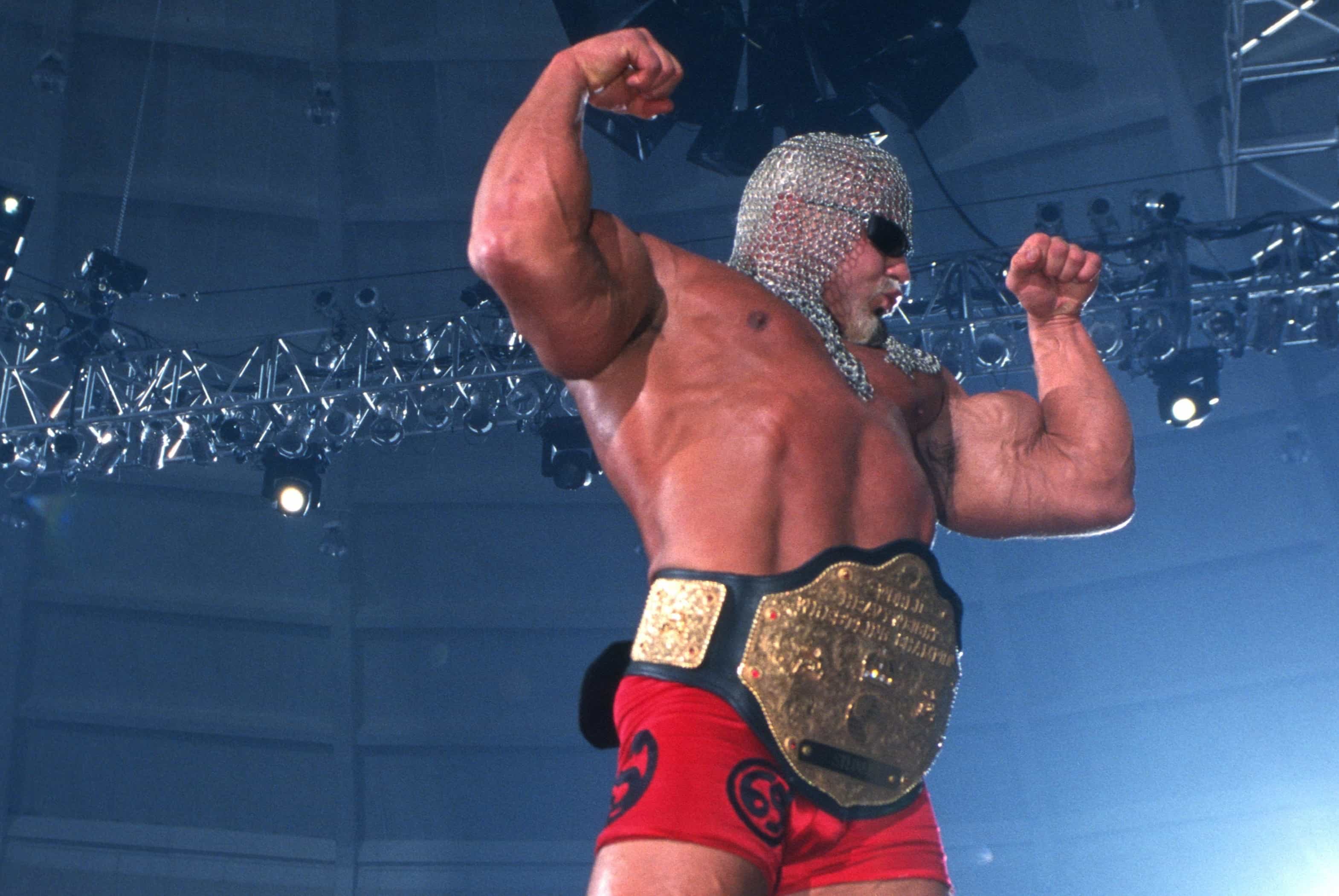
When it comes to the world of professional wrestling, few things generate as much excitement and anticipation as the weekly tradition of "WCW Monday Nitro." This iconic show, which aired from 1995 to 2001, captured the hearts and minds of fans around the globe, delivering unforgettable moments and shaping the landscape of sports entertainment. In this article, we'll delve into 15 fascinating facts about WCW that shed light on its impact, legacy, and behind-the-scenes dynamics. From legendary rivalries and groundbreaking innovations to unexpected twists and larger-than-life personalities, WCW left an indelible mark on the industry. So, buckle up and get ready to embark on a journey through the storied history of WCW, where the battles were fierce, the drama was intense, and the excitement was always at fever pitch.
Key Takeaways:
- WCW’s Monday Nitro and the nWo storyline revolutionized wrestling TV and storytelling, captivating fans worldwide and reshaping the industry during the iconic “Monday Night Wars.”
- The rise and fall of WCW left a lasting impact on professional wrestling, with its innovative contributions and iconic moments continuing to influence the industry today.
The WCW, or World Championship Wrestling, was a major player in the professional wrestling industry.
Established in 1988, WCW quickly rose to prominence as a formidable competitor to the World Wrestling Federation (WWF). With iconic wrestlers, captivating storylines, and intense rivalries, WCW captured the hearts of wrestling fans worldwide.
WCW Monday Nitro revolutionized the wrestling television landscape.
Debuting in 1995, WCW Monday Nitro introduced the concept of a live weekly wrestling show, directly challenging WWF's pre-taped programming. This innovative approach sparked the "Monday Night Wars," a legendary battle for TV ratings between WCW and WWF.
Hulk Hogan's shocking heel turn at Bash at the Beach 1996 transformed WCW.
Hulk Hogan, the beloved hero of wrestling, stunned the world by embracing villainy and forming the notorious New World Order (nWo) faction. This unexpected betrayal sent shockwaves through the wrestling community and forever altered the landscape of WCW.
The nWo storyline propelled WCW to unprecedented success.
The nWo's disruptive presence and captivating storyline propelled WCW to the top of the wrestling world, leading to a historic 83-week winning streak in the television ratings war against WWF.
WCW's acquisition of top WWF talent intensified the rivalry.
The signing of prominent WWF stars such as Kevin Nash and Scott Hall added fuel to the intense competition between WCW and WWF, elevating the stakes of the Monday Night Wars and captivating audiences worldwide.
The Cruiserweight division showcased unparalleled athleticism and excitement.
WCW's Cruiserweight division featured high-flying, technically gifted wrestlers who delivered breathtaking performances, captivating audiences with their agility and innovation.
Sting's enigmatic persona captivated audiences during the "Crow" era.
Sting's transformation into the enigmatic "Crow" persona captivated fans, as he evolved from a colorful, charismatic character into a brooding, silent avenger, adding depth and intrigue to WCW's storytelling.
The iconic "Monday Night Wars" reached its peak during the mid-90s.
The battle for television supremacy between WCW Monday Nitro and WWF's Monday Night Raw reached unprecedented levels of intensity, captivating audiences and reshaping the wrestling landscape.
WCW's innovative "WarGames" match thrilled audiences with its brutality and drama.
The annual "WarGames" match, featuring multiple wrestlers battling inside dual cages, became a signature event for WCW, captivating fans with its intense, high-stakes confrontations.
Eric Bischoff's bold leadership reshaped WCW's approach to storytelling and presentation.
As WCW's Executive Vice President, Eric Bischoff implemented daring strategies and innovative concepts, reshaping the promotion's creative direction and challenging the status quo of professional wrestling.
The rise of Goldberg brought unparalleled intensity to WCW.
Bill Goldberg's meteoric ascent, marked by a record-breaking undefeated streak, injected a new level of intensity and excitement into WCW, captivating audiences with his dominant in-ring performances.
The controversial "Fingerpoke of Doom" incident sparked widespread debate and criticism.
The infamous "Fingerpoke of Doom," in which Kevin Nash theatrically "defeated" Hulk Hogan, generated polarizing reactions and became a focal point of criticism within the wrestling community.
WCW's international expansion broadened its global appeal.
With international tours and events, WCW expanded its reach beyond the United States, captivating audiences worldwide and solidifying its status as a global powerhouse in professional wrestling.
The demise of WCW marked the end of an era in professional wrestling.
Following a series of internal and external challenges, WCW's eventual closure in 2001 marked the conclusion of a significant chapter in the history of professional wrestling, leaving a lasting impact on the industry and its devoted fanbase.
The legacy of WCW continues to influence the wrestling world today.
Despite its closure, WCW's innovative contributions, memorable moments, and iconic personalities continue to inspire and influence the wrestling industry, leaving an indelible mark on the hearts of fans and the evolution of professional wrestling.
Conclusion
In conclusion, these 15 WCW facts shed light on the significant impact and enduring legacy of World Championship Wrestling. From its humble beginnings to its trailblazing innovations, WCW left an indelible mark on the world of professional wrestling. Its fierce rivalries, larger-than-life personalities, and groundbreaking events captivated audiences worldwide, cementing its status as a cultural phenomenon. While WCW may no longer grace our screens, its spirit lives on in the hearts of fans and the annals of sports entertainment history. As we reminisce about the glory days of WCW, we celebrate its unforgettable moments and the profound influence it continues to exert on the wrestling industry.
FAQs
Q: What made WCW stand out from other wrestling promotions?
A: WCW distinguished itself through innovative storytelling, compelling characters, and groundbreaking matches that pushed the boundaries of sports entertainment.
Q: How did WCW impact the wrestling industry?
A: WCW's influence reverberates through the wrestling industry, shaping the way rivalries are portrayed, storylines unfold, and larger-than-life personas are crafted.
Hungry for more captivating wrestling facts? Satisfy your curiosity by exploring the behind-the-scenes world of Eric Bischoff, one of WCW's most influential figures. Unearth the untold story of Dean Malenko, a technical mastermind who left an indelible mark on the sport. And don't miss the chance to learn about Scott Norton, a powerhouse whose impact extended far beyond the squared circle. Each article offers a unique glimpse into the lives and careers of these wrestling icons, promising to entertain and inform fans of all ages.
Was this page helpful?
Our commitment to delivering trustworthy and engaging content is at the heart of what we do. Each fact on our site is contributed by real users like you, bringing a wealth of diverse insights and information. To ensure the highest standards of accuracy and reliability, our dedicated editors meticulously review each submission. This process guarantees that the facts we share are not only fascinating but also credible. Trust in our commitment to quality and authenticity as you explore and learn with us.


